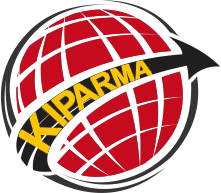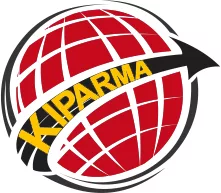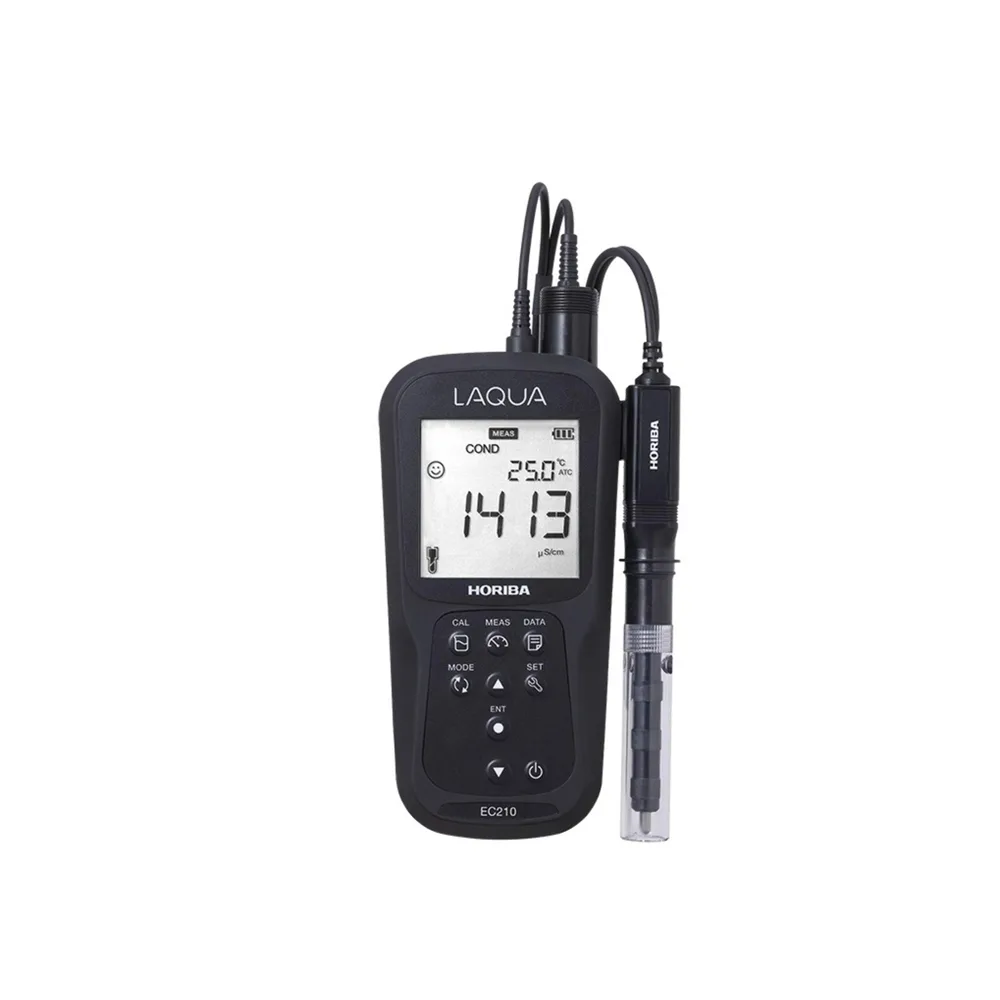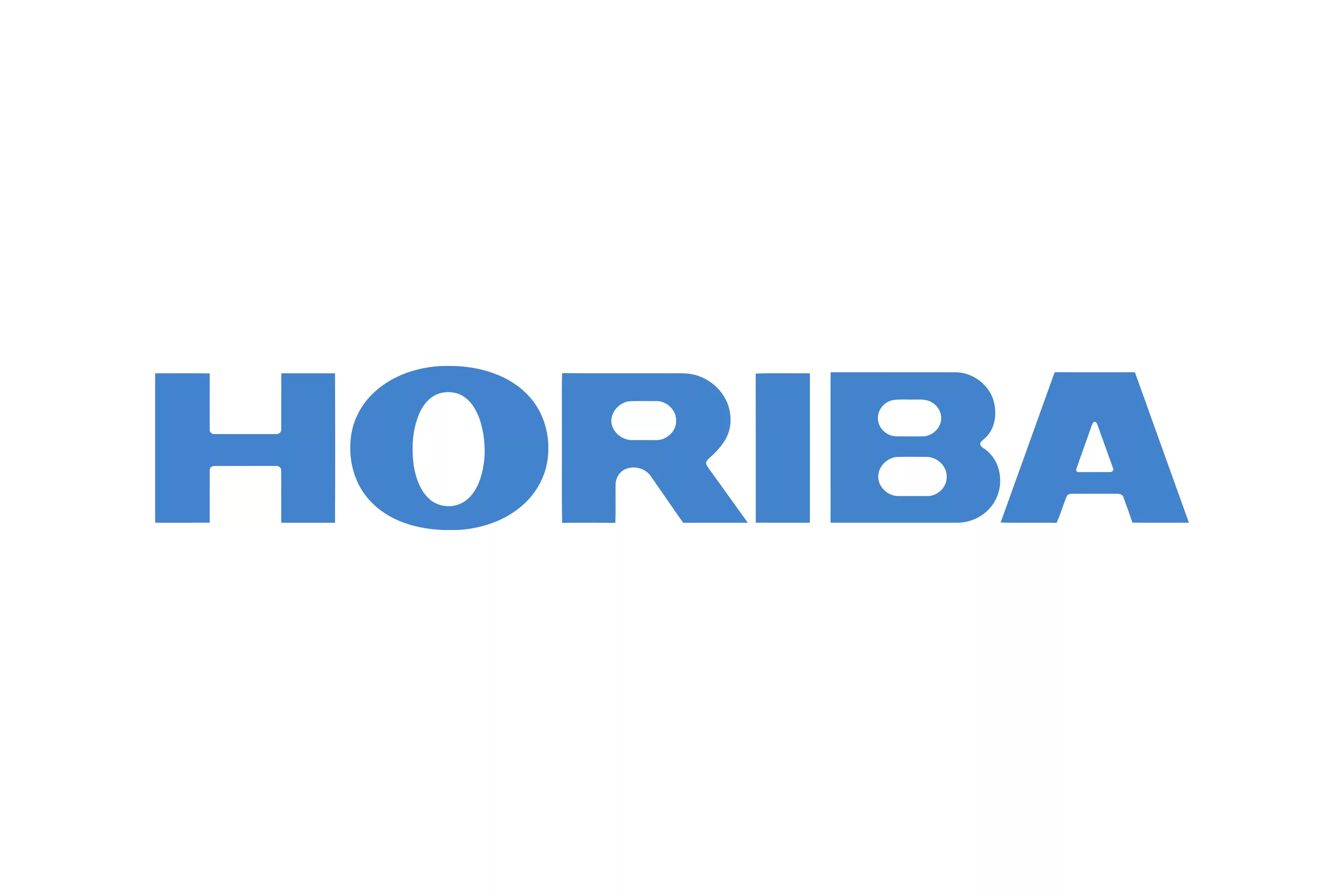Conductivity Meter – Accurate Measurement of Water and Solution Conductivity
Conductivity Meter Horiba LAQUA EC210 is an essential analytical instrument used to measure the ability of a liquid to conduct an electrical current. This property, known as electrical conductivity (EC), provides critical insights into the purity, salinity, and ion concentration of water or solutions.
Widely used in water quality testing, environmental monitoring, laboratories, and industrial process control, conductivity meters are vital for ensuring safety, compliance, and efficiency in diverse applications.
What Is a Conductivity Meter?
A conductivity meter measures the electrical conductivity of a solution by detecting how easily ions in the liquid transmit an electric current. The higher the ion concentration, the greater the conductivity reading.
Key purposes include:
-
Water Quality Analysis – Identify impurities, salts, and minerals.
-
Industrial Process Control – Monitor chemical solutions and cooling systems.
-
Environmental Monitoring – Assess river, lake, and wastewater conditions.
-
Laboratory Research – Analyze chemical, pharmaceutical, and biological samples.
Types of Conductivity Meters
-
Pocket Conductivity Meter
-
Compact and portable for quick field measurements.
-
Ideal for drinking water, aquariums, and hydroponics.
-
-
Portable Conductivity Meter
-
Rugged and versatile for on-site testing.
-
Suitable for environmental studies and industrial inspections.
-
-
Benchtop Conductivity Meter
-
High-precision instrument for laboratory applications.
-
Often supports temperature compensation and multi-parameter analysis.
-
Why Use a Conductivity Meter?
-
✅ Ensure Safe and Clean Water – Detect contamination in drinking water.
-
✅ Support Industrial Efficiency – Optimize chemical and cooling processes.
-
✅ Comply with Environmental Regulations – Monitor wastewater before discharge.
-
✅ Enable Accurate Laboratory Testing – Essential for research and QC analysis.
-
✅ Versatile Applications – Suitable for agriculture, pharmaceuticals, and food production.
How a Conductivity Meter Works
-
Electrode Immersion – A probe with electrodes is placed into the solution.
-
Current Transmission – The meter applies a small electrical current.
-
Conductivity Measurement – Ions in the liquid conduct the current; the meter calculates EC.
-
Temperature Compensation – Modern meters adjust readings for temperature variations.
-
Digital Display & Logging – Results are displayed and often stored for analysis.
Key Features of Modern Conductivity Meters
| Feature | Description |
|---|---|
| Wide Measurement Range | Handles ultra-pure water to highly saline solutions |
| Automatic Temperature Compensation (ATC) | Ensures accurate readings under varying temperatures |
| Digital Display & Data Logging | Simplifies result monitoring and storage |
| Durable, Waterproof Design | Suitable for field or industrial use |
| Multi-Parameter Options | Some models measure pH, TDS, and salinity simultaneously |
| Calibration Functions | Ensures consistent accuracy and compliance with standards |
Applications of Conductivity Meters
| Industry/Field | Application Example | Purpose |
|---|---|---|
| Environmental Monitoring | Rivers, lakes, and groundwater testing | Track pollution and water health |
| Industrial Processes | Chemical production, cooling towers | Maintain efficiency and safety |
| Food & Beverage | Beverage and ingredient testing | Ensure consistency and quality |
| Pharmaceutical & Lab | Solution preparation and quality analysis | Meet research and regulatory needs |
| Agriculture & Hydroponics | Nutrient solution monitoring | Optimize crop health and yield |
Benefits of Using a Conductivity Meter
-
🌊 Real-Time Water Quality Assessment – Instantly identify changes in conductivity.
-
🧪 Accurate and Reliable Results – Essential for research and compliance testing.
-
⏱ Portable and Easy to Use – Ideal for both lab and field measurements.
-
📊 Supports Process Optimization – Helps maintain system efficiency and reduce waste.
-
🌱 Environmental Protection – Ensures pollutants are detected early.
Choosing the Right Conductivity Meter
-
Application Environment – Choose portable for field use or benchtop for lab precision.
-
Measurement Range – Ensure it meets the conductivity range of your solutions.
-
Temperature Compensation – Essential for accurate readings in variable conditions.
-
Multi-Parameter Capabilities – Useful if pH, TDS, or salinity readings are required.
-
Data Logging and Connectivity – Ideal for reporting and regulatory compliance.
Summary
A conductivity meter is a vital instrument for accurately measuring the electrical conductivity of liquids. From water quality testing to industrial and laboratory applications, it ensures safety, efficiency, and regulatory compliance. Choosing the right meter enhances your ability to monitor solutions effectively and maintain consistent quality across all processes.





Reviews
There are no reviews yet.